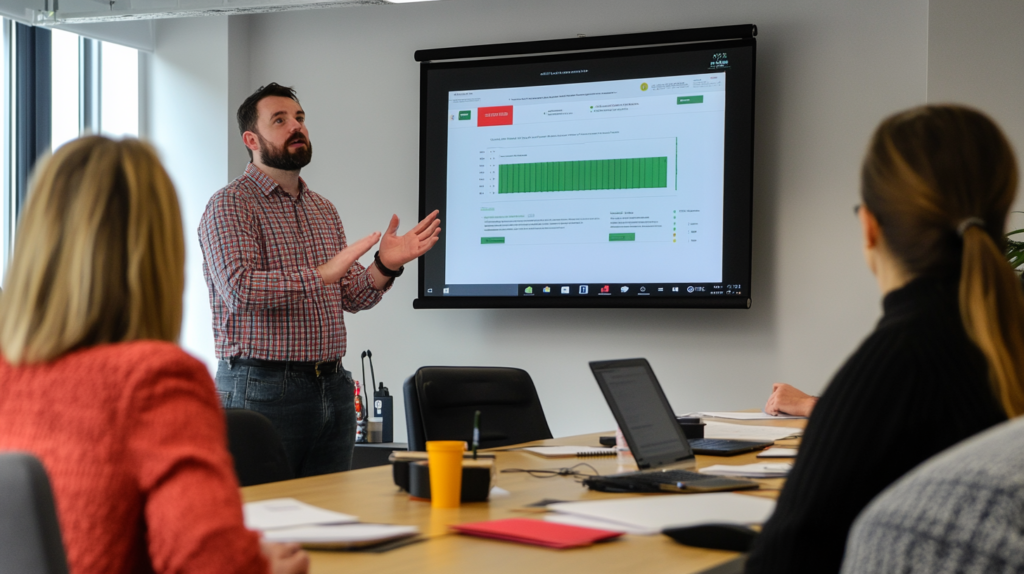Project Communication Strategies Every Team Must Know

Effective communication is the cornerstone of successful project management. By adopting robust project communication strategies, teams can streamline workflows, enhance stakeholder alignment, and ensure clarity at every project stage. In this article, we explore actionable communication strategies to drive project success, highlighting essential techniques and tools.
Table of Contents
- Importance of Project Communication Strategies
- Defining Communication Plans
- Stakeholder Alignment: The Key to Cohesion
- Effective Status Updates
- Feedback Loops: Driving Continuous Improvement
- Conflict Resolution Through Communication
- Building Consistency and Transparency
- Leveraging Deskcove for Superior Communication
- FAQ Section
Importance of Project Communication Strategies
Clear and effective communication can make or break a project. Strong project communication strategies foster transparency, promote alignment among stakeholders, and reduce the risk of misunderstandings.
Effective communication ensures that every team member understands their role and responsibilities, leading to higher productivity and fewer delays. Moreover, it bridges the gap between stakeholders, allowing for seamless collaboration and alignment of expectations.
Defining Communication Plans
A well-defined communication plan is a roadmap that guides the flow of information throughout the project lifecycle. Here are key components of a successful communication plan:
Setting Objectives
Before crafting a communication plan, outline specific goals. For instance, are you aiming to improve stakeholder alignment or enhance team collaboration? Defining clear objectives ensures a targeted approach.
Identifying Stakeholders
Understanding who needs to receive information is crucial. Stakeholders may include project sponsors, team members, or external partners. Tailor communication methods to address the preferences of each group.
Selecting Communication Channels
Choose appropriate channels, such as emails, collaboration tools, or face-to-face meetings. For instance, status updates may be best delivered through weekly meetings, while real-time collaboration might benefit from platforms like Deskcove.
Stakeholder Alignment: The Key to Cohesion
Alignment among stakeholders is essential to avoid bottlenecks and conflicts. Strong communication fosters collaboration and builds trust.
Understanding Stakeholder Needs
Engage stakeholders early to understand their expectations and concerns. Conduct surveys or interviews to gather insights and align goals.
Transparency and Two-Way Communication
Encourage open dialogue by sharing project details and inviting feedback. This transparency helps build trust and fosters a culture of collaboration.
Collaboration Tools for Stakeholder Engagement
Leverage tools like Deskcove to streamline communication and document decisions. These tools enable stakeholders to stay informed and engaged.
Effective Status Updates
Providing timely updates is vital for keeping all parties informed. Status updates should be consistent, clear, and actionable.
Establishing a Regular Meeting Cadence
Set a schedule for team meetings, such as weekly or bi-weekly. Regular updates keep everyone on the same page and allow for real-time issue resolution.
Crafting Concise Messaging
Use concise language to convey key points. Avoid jargon and focus on actionable insights to ensure clarity.
Leveraging Project Reporting Tools
Utilize reporting tools to generate visual summaries, such as dashboards or progress charts. These tools help present complex data in an easily digestible format.
Feedback Loops: Driving Continuous Improvement
Feedback loops are a critical component of effective project communication strategies. They provide opportunities for improvement and foster collaboration.
Encouraging Active Listening
Train team members to listen actively during discussions. Active listening ensures that all perspectives are considered, enhancing decision-making.
Incorporating Constructive Feedback
Create a safe environment where team members can share constructive feedback. Positive reinforcement and constructive criticism can drive performance.
Monitoring and Adjusting Communication Protocols
Regularly evaluate the effectiveness of communication methods. Adjust protocols to address gaps or inefficiencies.
Conflict Resolution Through Communication
Conflicts are inevitable in projects, but effective communication can minimize their impact.
Identifying Communication Barriers
Pinpoint obstacles, such as cultural differences or unclear expectations. Understanding these barriers is the first step in resolving conflicts.
Establishing Escalation Paths
Define clear escalation paths for resolving disputes. These protocols ensure that conflicts are addressed promptly and effectively.
Conflict Mitigation Techniques
Adopt conflict resolution techniques such as mediation or consensus-building exercises. These methods encourage collaboration and mutual understanding.
Building Consistency and Transparency
Consistency and transparency are the hallmarks of effective communication. They ensure that all stakeholders have access to accurate and timely information.
Developing Communication Schedules
Create a schedule outlining when and how information will be shared. This schedule sets expectations and reduces confusion.
Ensuring Message Consistency
Standardize messaging across channels to avoid discrepancies. Consistency enhances credibility and reinforces trust.
Promoting Information Sharing
Foster a culture where team members are encouraged to share relevant information. This open exchange facilitates collaboration and innovation.
Leveraging Deskcove for Superior Communication
Deskcove is a powerful platform that enhances project communication strategies. It offers a suite of tools for collaboration, including real-time messaging, task tracking, and reporting dashboards. With Deskcove, teams can streamline workflows, improve transparency, and maintain alignment across all project stages.
FAQ Section
Q1: Why are project communication strategies important?
A1: They ensure clarity, improve collaboration, and reduce risks, leading to successful project outcomes.
Q2: How can I align stakeholders effectively?
A2: Understand their needs, maintain transparency, and use collaboration tools like Deskcove to engage them.
Q3: What are some common communication barriers?
A3: Barriers include cultural differences, unclear expectations, and poor listening skills. Addressing these proactively is key.
Q4: How does Deskcove improve communication?
A4: Deskcove offers real-time collaboration tools, task management features, and reporting dashboards to streamline project workflows.
By implementing these project communication strategies, teams can ensure seamless collaboration, meet stakeholder expectations, and achieve project success. With tools like Deskcove, managing communication becomes more efficient and impactful.


